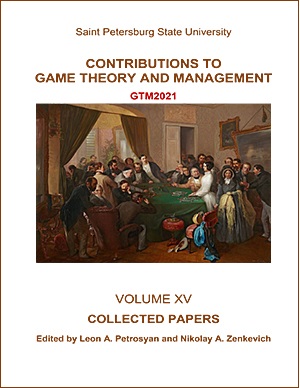Vector Epidemic Model of Malaria with Nonconstant-Size Population
DOI:
https://doi.org/10.21638/11701/spbu31.2022.15Abstract
Keywords:
malaria, mathematical modeling of epidemics, mosquito population, subpopulations, reproductive number, endemic equilibrium
Downloads
References
Downloads
Published
How to Cite
Issue
Section
License
Articles of "Contributions to Game Theory and Management" are open access distributed under the terms of the License Agreement with Saint Petersburg State University, which permits to the authors unrestricted distribution and self-archiving free of charge.




